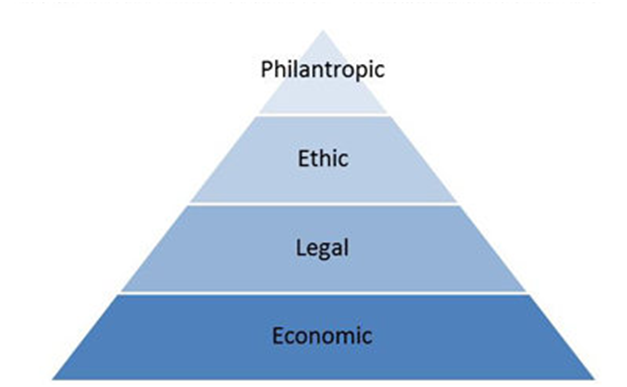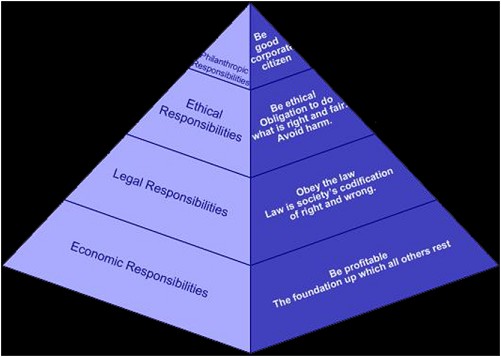Posts Tagged ‘Ethics’

IKEA Corporate Social Responsibility (CSR) efforts are led by Chief Sustainability Officer, Lena Pripp-Kovac. Furthermore, retail managers at every country are also Corporate Sustainability Officers (CSO). The home improvement and furnishing chain started to research CSR reports under the title People & Planet Positive starting from 2012. IKEA CSR efforts and activities comprise supporting local communities, educating and empowering workers and addressing the issues of gender equality and minorities within the company. Moreover, the global furniture retailer works to reduce its energy consumption and derive energy from alternative sources. Sustainable sourcing represents an additional CSR issue that IKEA aims to address within the scope of its operations. CSR Programs and Initiatives IKEA Supporting Local Communities IKEA Group operates 422 stores in 50 markets around the world.[1] The home improvement and furnishing chain aims to cause positive impact on local communities, where its stores are located. Packing event organized by all IKEA stores in Sweden involved customers and representatives from Save the Children to prepare more than 37,000 welcome backpacks filled with toys and other products for children In UK, IKEA has planted one million trees in communities across the country In Australia, IKEA Perth and IKEA Adelaide employees contribute to the improvement of the environment in which children live and develop. IKEA Educating and Empowering Workers Starting from January 2015, IKEA has introduced a new hourly wage structure that concentrates on the needs of its employees, rather than market standards. The furniture retailer has launched My Learning online system that provides employees at all levels access to face-t-face and digital learning solutions. Employee Health and Safety at IKEA In 2021, the furniture retailer introduced a common solution for reporting incidents and accidents that’s easily accessible for all co-workers The number of accidents at IKEA was reduced by…

Corporate social responsibility (CSR) can be defined as “the obligation of decision makers to take actions which protect and improve the welfare of society as a whole along with their own interests” (Carroll and Buchholtz, 2008, p.39). CSR represents a critically important aspect of a successful business regardless of the industry. Hilton Worldwide has announced its commitment to continually improve its CSR performance in the following directions: Employees Impact on the local community Environment Responsible sourcing The program ‘Travel with Purpose’ launched in 2011 serves as a guiding principle behind Hilton CSR programs and initiatives. The company releases Global Responsibility Report annually and it includes the details of CSR programs and initiatives engaged by the company. The table below illustrates highlights from Hilton Worldwide 2014-2015 Corporate Responsibility Report: Categories of CSR activities Hilton Performance Supporting local communities October is a Global Month of Service for Hilton. In October 2015, teh company activated 4,145 volunteer projects worldwide resulting in 213,000 volunteer hours in 92 hours Nearly 200 Travel with Purpose Action Grants were awarded in 2015 to support Hilton properties and local communities Educating and empowering workers Hilton Worldwide University offered 2 million courses and 5 million hours of learning for employees in 2015 alone More than 14,000 Hilton managers attended its ethics and anti-corruption training in 2014 Labour and human rights The company achieved a maximum score of 100% on the Human Rights Campaign Foundation’s Corporate Equality Index Employee health and safety No information found Gender equality and minorities Women represent 51 per cent in Hilton’s US owned, managed and corporate locations Since 2013 Hilton employed more than 7,300 veterans and their spouses Environment a) energy consumption b) water consumption c) Waste reduction and recycling d) CO2 emissions Forbes has acknowledged Hilton as a Top 50 Green Brand and the…

1. Introduction Once the largest provider of internet-based communication services and the second largest long-distance telephone company in the US, WorldCom became one of the most popular case studies for corporate ethics, financial frauds and senior management irresponsibility along with Enron. This article contains analysis of the fall of WorldCom employing four-stage fundamental analysis. The article starts with discussions of business strategy in general and analysis of strategies that exposed WorldCom to major risks in particular. This is followed by analysis of analysis of accounting practices used at WorldCom. Moreover, the article contains discussions devoted to financial analysis and the role of auditors in relation to WorldCom case study, as well as, prospective analysis that addresses valuation models employed by WorldCom accountants. This article is completed by reflecting upon important lessons to be gained from this particular case study for international business practices. 2. Business Strategy Analysis: Strategies and Practices that Exposed WorldCom to Major Risks Business strategy analysis is the first stage of the four-stage fundamental analysis of the business entity. Business strategy analysis associated with in-depth study of effectiveness and sustainability of competitive advantage of the company. Business strategy is a broad topic with multiple facets with varying levels of impacts on firms’ competitiveness and long-term growth. займ на карту мгновенно круглосуточно без отказа According to the framework of Porter’s Generic strategies (1985) businesses can base their competitive advantage on differentiating products and services or offering products and services for competitive prices. Importantly, the choice between is faced by overall businesses entity, as well as, separate segments within the entity. Primarily, WorldCom’s business strategy was most related to cost advantage, offering discount long-distance telephone services, according to the former name of the company Long Distance Discount Services Inc. (LDDS). However, as the company entered the phase of massive expansion…

The concept of CSR Pyramid, proposed by Carroll (1983) divides business obligations into four levels, explaining requirements of obligations in each level, as well as their importance. Economic responsibility is considered to be core responsibility of the business and it relates to profit maximisation. Economic responsibility is mainly self-regulatory in a way that if a business entity neglects or fails to meet its economic responsibilities it is just a matter of time before the business becomes a history. Legal responsibility of a firm relates to adhering to rules and regulations of the respective government. Meeting legal responsibilities is critically important for businesses and the case study of Enron can be mentioned to explain the potential negative consequences of abusing legal responsibilities. Ethical responsibilities for a business entity relate to certain responsibilities that go beyond basic economic and legal requirements for a business entity. Ethical responsibilities are usually expected by organizational stakeholders, but usually there are no government laws and regulations to enforce these responsibilities. However, each case is different and there might be instances where governments may interfere in relation to ethical issues. Philanthropic responsibility is understandably placed at the highest level of responsibilities because it is not generally expected and mainly initiated for advertisement and public relations purposes. Philanthropic acts engaged by businesses may include sizable donations to various causes or local communities, or contributing to society in other ways. Although Carroll’s CSR Pyramid is widely considered to be a substantial contribution to the development of the field of CSR, it has been criticized by various authors. Hockerts et al. (2008) criticise this framework by arguing that there is no need to represent CSR as a hierarchy. In other words, according to Hockerts et al. (2008), unlike Maslow’s Hierarchy of Needs, in Carroll’s CSR Pyramid there are weak or…

According to Horrigan (2010) there is no widespread definition of CSR due to the high levels of ambiguity and controversy associated with the topic. It has to be noted that “virtually all definitions of CSR include the notion that business firms (i.e., corporations) have obligations toward society beyond their economic obligations to shareholders” (Schwartz, 2011, p.19) Nevertheless, CSR definition that captures the main aspects of the term can be proposed as “corporate initiative to assess and take responsibility for the company’s effects on the environment and impact on social welfare” (Investopedia, 2013, online). Additionally, the following definitions of CSR have been proposed by different authors: “how companies manage the business processes to produce an overall positive impact on society” (Baker, 2004) “continuing commitment by business to behave ethically and contribute to economic development while improving the quality of life of the workforce and their families, as well as of the local community and society at large” (World Business Council for Sustainable Development in Hopkins, 2007) additional responsibilities of businesses to local and wider communities apart from its core responsibility of profit maximisation (Simpson and Taylor, 2013) References Baker, M. (2004) “Corporate Social Responsibility – What does it mean?” Available at: http://www.mallenbaker.net/csr/definition.php Corporate Social Responsibility (2013) Investopedia, Available at: http://www.investopedia.com/terms/c/corp-social-responsibility.asp#axzz2A54oj5IY Horrigan., B. (2010) Corporate Social Responsibility in the 21st Century: Debates, Models and Practices Across Government, Law and Business, Edward Elgar Publishing, Cheltenham, UK Schwartz, M.S. (2011) “Corporate Social Responsibility: An Ethical Approach” Broadview Press, USA Simpson, J. & Taylor, J.R. (2013) “Corporate Governance Ethics and CSR” Kogan Page
October 29, 2013
By John Dudovskiy
Category: Corporate Social Responsibility
Tags: Definitions, Ethics

There is more than one way of fostering ethical behaviour within an organisation. Establishing formal structures and systems is one of them and considered to be very effective in accomplishing this task. However, strong ethical leadership is vital in shaping long-term ethical behaviour in organizations and any other formal structure’s or system’s effectiveness diminishes dramatically without it. Strong ethical leadership is the factor which introduces, sustains and protects the process of ethical change in an organization. In this essay relative merit of code of ethics, ethics training and strong ethical leadership will be determined in the process of shaping long-term behaviour within an organisation and attempt will be made to identify the most effective one. It should be remembered though, in the field of management and ethics definitive and clear-cut answers are a rare thing. ‘Ethics is the code of moral principles and values that governs the behaviours of a person or group with respect to what is right or wrong’ (Daft, 2007, p.252). The role of ethics in the last decade increased and big corporate scandals were probably the main reasons behind this trend. Names like Enron, WorldCom, Arthur Anderson, BP remind us of how proper conduct in ethical matters can save jobs, money and do less harm to the environment. As organizations are trying to find the best ways and methods to introduce and shape ethical behaviour within them, several ideas emerged on how to do it. Most of them involve active involvement of organizations’ leadership. One of them is establishing formal structures and systems in the organization to introduce and facilitate change in ethical behaviour of employees. Written code of ethics is a good example of such formal structure. ‘A code of ethics is a formal statement of the company’s values concerning ethics and social responsibility; it…

Generally, views on CSR are divided into two categories: narrow and broad (Crane and Matten, 2007). Narrow view considers the only objective for business entities to consist of profit maximisation. On the contrary, according to the supporters of the broad view to CSR apart from their primary objective of maximising profits businesses are also responsible towards the society and community in which they operate in terms of addressing possible negative implications of their business practices. Urip (2010) convincingly argues that the numbers of supporters of narrow view to CSR have sharply declined in recent years due to the increasing level of focus CSR related issues are attracting from various organisational stakeholders. Amao (2011) further expands this point and associates the penalties for neglecting CSR aspect of business practice with damage to brand image and customer goodwill, and consequent threat to company’s long-term growth. References Amao, O. (2011) “Corporate Social Responsibility, Human Rights and the Law: Multinational Corporations in Developing Countries” Taylor & Francis Crane, A & Matten, D, 2007, “Business Ethics” second edition, Oxford University Press, Oxford, UK Urip, S. (2010) “CSR Strategies: Corporate Social Responsibility for a Competitive Edge in Emerging Markets” John Wiley & Sons

According to Blowfield and Murray (2008, p.21), as taken from Carroll (1979), company CSR activities can be classified into the following four groups: Economic responsibility. The responsibility of private entities of offering products and services to the marketplace according to the needs of society in order to make a profit. Legal responsibility. Companies have to operate within the boundaries of law in order to achieve their aims and objectives. Ethical responsibility. Ethical responsibilities of businesses include the types of responsibilities that are important, but at the same time they are not covered by law e.g. fair-trade. Discretionary responsibilities. Company responsibilities in this form, like philanthropy initiatives are not necessarily expected by societies, but they are usually welcomed by societies and create positive image for the business. This classification is also known as Carrol’s Pyramid of CSR and is best illustrated on the following figure: Source: Global Integration Business Consultants (2011, online) Alternatively, CSR initiatives are classified by Kotler and Lee (2005) into six broad categories that can are illustrated on the following table: Type of CSR activity Descriptions Cause promotions Resources spent by companies to promote a specific cause that benefits society in many levels such as eliminating poverty or fighting against child abuse Cause –related marketing A marketing campaign initiated by a business that highlights positive correlation between the amount of sales for the business and the amount of contribution to support a specific cause. Corporate Social Marketing Businesses promoting social causes such as healthy eating, caring about parents, quit smoking etc. Corporate Philanthropy This form of CSR involves businesses donating money or products of the company in substantial amounts in order to support specific causes. Community volunteering Businesses engaging their employees to work in a community sector for a specified number of hours on a voluntary basis Socially…

Major points of viral marketing criticism include lack of control over the impact of a viral marketing campaign, vulnerabilities to manipulation and spamming, and limited level of accesability. Lack of Control over the Impact One of the serious disadvantages associated with viral marketing relates to lack of control over the impact of viral marketing campaign. Unlike the majority of alternative marketing campaigns; in some cases it is not possible for businesses to stop a viral marketing campaign. The necessity to stop the marketing campaign may arise when the campaign is proving to be counter-productive, or the level of demand exceeds the company’s production capabilities. Vulnerability to Manipulation and Spamming Disadvantages of viral marketing might include vulnerability to manipulation and spamming. This is especially true in occasions where incentives are provided for the spread of viral message, and in individuals might become motivated to send the message to other individuals that do not wish to receive the message. In this way, there can be a risk for a viral marketing campaign to be a counter-productive. Limited Level of Accessibility Lilien and Grewall (2012) consider limited level of accessibility as a serious disadvantage of viral marketing. Specifically, Lilien and Grewall (2012) point to a wide range of media formats such as Flash Player, Firewall software etc. and argue that internet users need to be equipped with the relevant software in order to be impacted by a viral message. References Lilien, G.L. & Grewal, R. (2012) “Handbook of Business-to-Business Marketing” Edward Elgar Publishing

Defined as “a set of conventional principles and expectations that are considered binding on any person who is a member of a particular group” (Code of Conduct, 2012, online), code of conduct is considered to be an effective tool to encourage or even reinforce particular pattern of behaviour. Code of conduct in health care settings in particular can be described as normative. In other words, they are “concerned with describing what should be done and how you should behave; i.e. the moral principles, rules and values that should guide your actions” (Hendrick, 2004, p.63). This article represents a critical review of a code of professional conduct for nursing and midwifery developed by Nursing and Midwifery Council (NMC) that has been introduced in 2004 and revised in 2008. Revisions relate to the additions of new principles that have increased the total numbers of principles in the code from 54 to 61. The article critically evaluates both, the structure and content of the code and addresses the core principles within the code in a detailed manner. Analysis of NMC Code of Professional Conduct NMC code of conduct is based on four following core principles: The first core principle: taking care of individuals concerned, treating them as individuals, and respecting their dignity at all times. This core principle consists of 20 individual principles that address a range of relevant issues such as treatment of people as individual, respecting of confidentiality of people, maintaining collaboration with those in care, and ensuring that consent has been gained. The principles of treating people as individuals (principles 1 to 4) require nurses and midwife to treat people with great level of care and consideration, not to discriminate against anyone and avoid stereotyping those in care due to their illnesses and possible disabilities. Discrimination can be defined…
January 5, 2013
By John Dudovskiy
Category: Corporate Social Responsibility
Tags: Ethics, Healthcare
